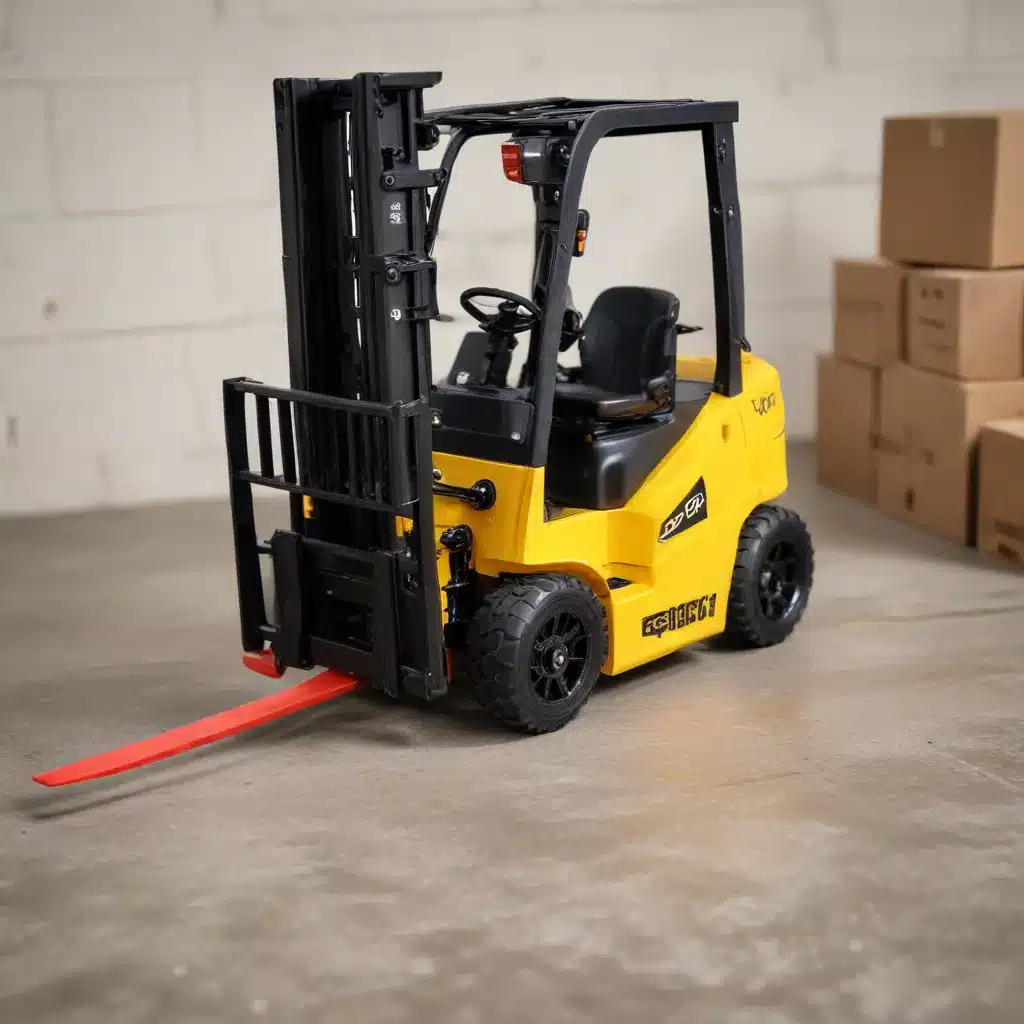
Unlocking the Future of Forklift Customization with 3D Printing
In the ever-evolving world of material handling, enthusiasts and industry professionals alike are embracing the power of 3D printing to push the boundaries of what’s possible. One such innovative project that has captured the imagination of the forklift community is the creation of a fully functional, 3D printed, radio-controlled (RC) forklift. This remarkable DIY endeavor showcases the potential of additive manufacturing to transform the way we design, prototype, and customize forklift solutions.
A Passion Project Brought to Life
The journey behind this 3D printed RC forklift began with a simple question: “What if we could create a miniature forklift that encapsulates the same functionality and precision as its full-scale counterparts?” Driven by a relentless spirit of innovation and a deep fascination with material handling, a team of enthusiasts set out to make this vision a reality.
By leveraging the versatility of 3D printing, the team was able to design and fabricate every component of the RC forklift, from the sturdy frame and intricate lifting mechanism to the advanced control system. The process involved meticulously designing 3D models, refining the designs through multiple iterations, and then precisely 3D printing the necessary parts.
Unparalleled Customization Capabilities
One of the most compelling aspects of this 3D printed RC forklift project is the level of customization it enables. Unlike mass-produced forklifts, this DIY model can be tailored to the unique needs and preferences of the creator. From adjusting the dimensions to incorporating specialized attachments, the 3D printing approach offers an unprecedented level of design flexibility.
“The beauty of 3D printing lies in its ability to bring our wildest forklift ideas to life,” explains a member of the project team. “We can experiment with different designs, test new features, and ultimately create a one-of-a-kind solution that perfectly suits our needs.”
Pushing the Boundaries of Functionality
While the 3D printed RC forklift may seem like a novelty at first glance, its potential applications extend far beyond mere hobbyist enjoyment. This project serves as a testament to the transformative power of additive manufacturing in the material handling industry.
By perfecting the design and functionality of the 3D printed RC forklift, the team has showcased the feasibility of using similar techniques to prototype and test new forklift concepts. This approach can significantly accelerate the product development cycle, allowing manufacturers to quickly iterate on designs, test new features, and gather valuable feedback before committing to full-scale production.
Embracing the Future of Forklift Innovation
As the material handling industry continues to evolve, the 3D printed RC forklift project stands as a shining example of the innovative spirit that drives the forklift community. By harnessing the power of additive manufacturing, enthusiasts and professionals alike can explore new frontiers, challenge conventional thinking, and ultimately, unlock the full potential of forklift technology.
“This project is just the tip of the iceberg,” says an industry expert. “As 3D printing technology advances and becomes more accessible, we can expect to see an explosion of creativity and customization in the forklift space. The future of material handling is truly being shaped by the visionaries who are willing to push the boundaries of what’s possible.”
Practical Implications and Applications
Beyond the excitement of the 3D printed RC forklift, this project also offers practical implications for the material handling industry. The lessons learned and the insights gained can be applied to various aspects of forklift design, maintenance, and customer engagement.
Rapid Prototyping and Testing:
The ability to quickly 3D print forklift components and assemblies can revolutionize the product development process. Manufacturers can experiment with new designs, test innovative features, and gather feedback from users in a fraction of the time it would take using traditional manufacturing methods.
Customized Replacement Parts:
When a forklift requires a replacement part, 3D printing can provide a cost-effective and efficient solution. By maintaining a digital library of forklift components, manufacturers can print on-demand parts, reducing inventory costs and ensuring timely delivery to customers.
Specialized Attachments and Accessories:
The customization capabilities of 3D printing open up new possibilities for forklift attachments and accessories. Customers can design and print specialized tools, attachments, or even entire forklift modifications to meet their unique material handling needs.
Operator Training and Engagement:
For forklift operators and enthusiasts, the 3D printed RC forklift can serve as an engaging training tool. By interacting with a scaled-down, yet highly functional model, operators can hone their skills, familiarize themselves with forklift controls, and better understand the nuances of material handling operations.
Fostering a Culture of Innovation:
The success of the 3D printed RC forklift project demonstrates the power of DIY innovation and the creative spirit that thrives within the forklift community. By encouraging and supporting such initiatives, the industry can cultivate an environment that fosters new ideas, technological advancements, and a deeper appreciation for the art of material handling.
Conclusion: Redefining the Forklift Landscape
The 3D printed RC forklift project is a testament to the transformative potential of additive manufacturing in the material handling industry. By empowering enthusiasts and professionals to reimagine the future of forklifts, this innovative endeavor has opened up a world of possibilities.
As the forklift community continues to embrace the power of 3D printing, we can expect to see a wave of custom-built, highly specialized forklift solutions that push the boundaries of what’s possible. From rapid prototyping to on-demand parts manufacturing and beyond, the integration of additive manufacturing into the forklift landscape will undoubtedly redefine the way we approach material handling challenges.
Ultimately, the 3D printed RC forklift project serves as a inspiring reminder that the future of the forklift industry lies in the hands of those who dare to dream, experiment, and innovate. By harnessing the transformative power of 3D printing, the material handling community can unlock new levels of customization, functionality, and efficiency, paving the way for a more dynamic and innovative future.

